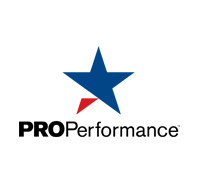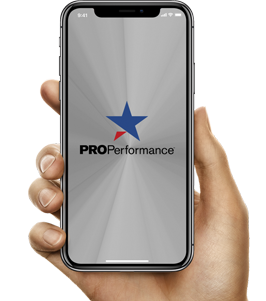Training Philosophy
July 22, 2016
Training is designed to establish a base level of strength, build good movement patterns, and teach athletes how to move through space quickly, safely, and most importantly as fast as possible.
There are common truths and principles that should be the building blocks of any philosophy, program or system (from functionalmovement.com).
Proper progression is mastery of one level of development before proceeding to the next.
Principle 1 states that we should first move well, then move often.
Seek a qualitative minimum before we worry about quantities. If moving well is the standard, moving often is the foreseeable outcome.
Principle 2 directs us to protect, correct, and develop the movement of those in our care.
Guided by the Hippocratic Oath, first do no harm and then progress in direction of independence and sustainability.
Principle 3 tells us to create systems that enforce our philosophy.
Implement of standard operating procedures, practice intelligent selection, always matching the risk: challenge ratio to the growth and development desired.
Movement Principle 1: First move well, then move often.
Principle 1 tells us to move well, then move often. I firmly believe this is the life lesson that nature teaches us; I see it in animals and those people who are the physically and spiritually healthiest. Principle 1 is our natural principle.
We should move well enough to respond and often enough to adapt. Moving well allows us to respond appropriately to environmental signals. It sets up the feedback that is vital for progressive movement learning. Moving often adds volume across time which allows our patterns and tissues to adapt.
We need to see movement for what it is—the most distinguishable sign of life—a true vital sign. If we look at the developmental model, we are born with mobility and earn stability. We transition from fundamental to functional movements. Even the most highly developed running and climbing skills have roots in our primal patterns.
Understanding this amazing process is understanding that movement is driven through perception and behavior.
Movement Principle 2: Protect, correct, and develop.
If we lack fundamental movements, the path to fitness and health does not begin with supplementary exercise. That is the paradigm that puts quantity before quality—it attempts to build fitness on dysfunction—it focuses on parts. The first principle has somehow been reversed—people move often and hope that moving well will just happen. It won’t. And movement problems will only get worse when compounded by frequency.
The solution is simple—we need to quit lowering fitness standards. We can meet the old ones just fine if we raise movement standards. We also need to quit focusing on parts; reductionism, the breakdown of movement into isolated segments, has not reduced our musculoskeletal injuries nor has it made us healthier or more fit.
Patterns and sequences remain the preferred mode of operation in biological organisms, and that is where our focus is.
Why does the first principle work? Why do we move? Because movement affords us opportunity. It is on the foundation of movement that development occurs through the SAID principle: Specific Adaptation to Imposed Demand.
Moving well before moving often—this order offers us the greatest exposure to opportunities and risk. Moving well before moving often also offers us the greatest adaptation to environment.
Let’s pick back up and look at that word risk. It is not as scary as it sounds if we invoke our second principle: protection always precedes correction, which in turn, precedes development. If we go back to our common truths, we believe that nature’s ability to nurture strong and gracefully aging bodies cannot be bested, but we also understand that nature is not concerned about or even aware of your personal or specific development.
Nature is big and it can be harsh. Nature doesn’t stop to wait for your adaptation and development and sometimes the lessons it teaches are not survivable. The second principle requires us to develop a non-failure environment.
The SAID Principle should never be used as the sole excuse to lift more weight, run faster, climb farther, swim harder or fight bigger opponents. That thinking puts more before better.
This statement should not sound negative to you in any way. Our pursuits of success create large amounts of risk and failure. Better to focus on non-failure at each level, ensuring a stable base for each new ability.
Unfortunately, we see the success we want and don’t embrace the slow-growth, cultural approach that creates long term successful development. Nothing in motor science supports early specialization—but that is now the norm.
Protect from opportunities that do not promote productive feedback and/or impose risk.
Correct feedback by magnifying misread obstacles within the learning path.
Develop progressions with rich sensory experience and clear, robust feedback to foster independence and productive self-regulation.
You do not move to the next level of development until you are competent and independent at your current level—and can sustain it.
Principle 2 is our ethical principle, and we would rather injure your pride than your body.
Movement Principle 3: Create systems that enforce your philosophy.
When discussing progressive levels of development, we believe that we can develop you faster and safer than nature. This belief guides us to Principle 3, directing us to create systems that enforce our philosophy.
Principle 3 is the practical principle.
Standard operating procedures and intelligent selection protect those who entrust their health and fitness to us.
But where should a system start? It should recognize that we cannot know anything without perspective—that we cannot progress without baselines. Earlier I mentioned movement as a vital sign of life, and along with blood pressure and body temperature and many others, it absolutely is.
Unlike that long list, we currently have no baseline for understanding movement as a vital sign.
If we can have a system that looks at fundamental movement patterns, we can create a baseline.
With that baseline, we can identify and demonstrate the fundamental movements that are missing, deficient or dysfunctional. If movement is below a vital sign or ability—that’s dysfunction; below an environmental standard—that’s deficiency (necessary, but not sufficient). We can communicate these states to colleagues and medical professionals in a common language that, in itself, will enforce responsibility and accountability.
With a common language and knowledge of the movement issues, we can help the individual regain these fundamentals. We can use those metrics to determine our protective, corrective and development strategies. We’ll have our version of the pre-flight checklist.

